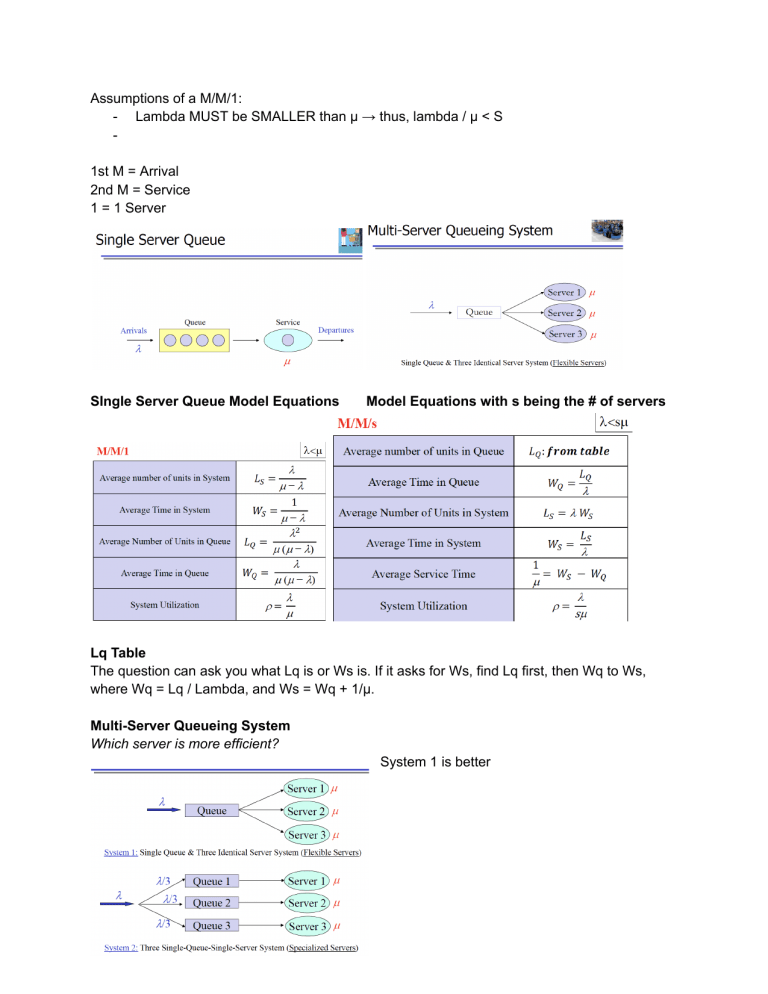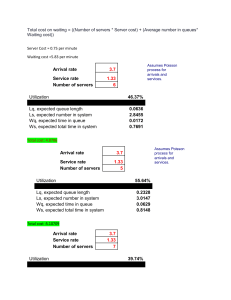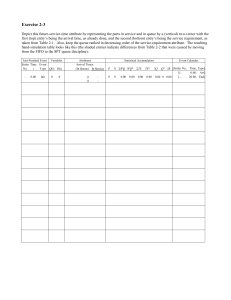
Assumptions of a M/M/1: - Lambda MUST be SMALLER than µ → thus, lambda / µ < S 1st M = Arrival 2nd M = Service 1 = 1 Server SIngle Server Queue Model Equations Model Equations with s being the # of servers Lq Table The question can ask you what Lq is or Ws is. If it asks for Ws, find Lq first, then Wq to Ws, where Wq = Lq / Lambda, and Ws = Wq + 1/µ. Multi-Server Queueing System Which server is more efficient? System 1 is better First City National Bank ● Verification of model assumptions (using data) ● Practical issues in determining model parameters ● Finding the number of servers ● Design issues ○ Single line or multiple lines? ● Staffing Lambda = Avg. Arrivals per min = 142/30min = 4.73 customers per min @ 12pm µ = 60/45.5 = 1.32 customer per min Common Queue or Separate Queues First step: Identify arrival rate and service rate for a given time interval → Use M/M/s spreadsheet to analyze Alternatives 1 and 2 Lambda: Arrival rate to the system µ: Service rate of each server S: Number of servers Rules: Lambda < µs S > Lambda/µ Class Example: Alternative 1: Common Queue; Alternative 2: 4 Separate Queues Observations 1. Same utilization 2. Lower waiting time in the common queue In Alt 2 (Separate Queue), some people are waiting in line, while some servers are idle, while in Alt 1 (Common Queue) this is impossible → Pooling resources is more efficient Pro & Con of Common Queue ● Pro: Lower waiting time ● Con: A longer queue Summary ● Waiting lines form due to variability ● Basic tradeoff between cost and quality ● Decisions: ○ Service Capacity: service rate, number of servers ○ System configuration ● Performance measures: ○ Under Exponential service times and interarrival times ● ○ Use of M/M/s Spreadsheet to examine system performance Common queue is better than separate queues in terms of reducing waiting time



